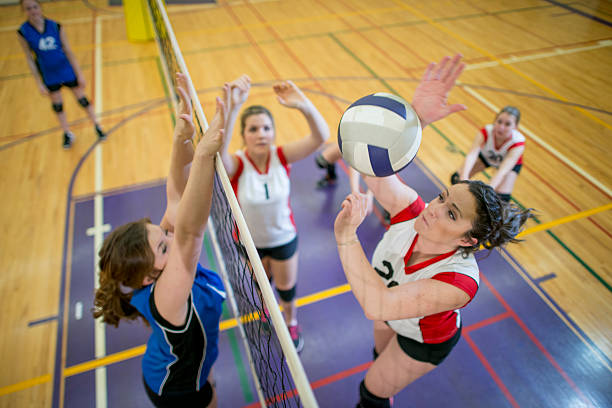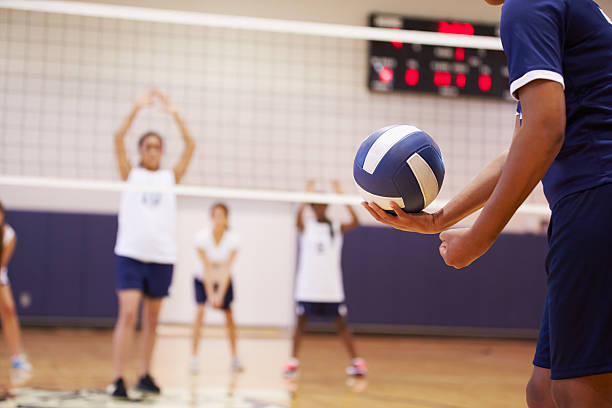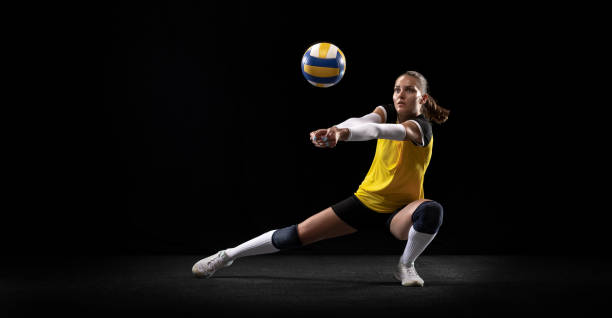Introduction
In volleyball, each player’s job is really important. They all have different roles that help their team win.
You might have heard about a player called the libero. They’re like a specialist in defense. But does every volleyball team have a libero? Let’s find out if that’s true or just a myth.
Volleyball introduced a new position called the libero to improve defense In the late 1990s.
This player stands out by wearing a different colored jersey and follows certain rules, like not being allowed to attack the ball from the front row.
The libero mainly focuses on digging, passing, and helping set up the ball for their team’s attackers.
Does Every Volleyball Team Have A Libero?
Even though many competitive volleyball teams use the libero position, it’s not required for every team.
In fact, whether a team uses a libero depends on the level of play, from casual leagues to professional matches. While most top teams choose to have a libero because it helps them strategically, some teams decide not to use one for different reasons.

Reasons For Not Using A Libero In Volleyball
Firstly, the libero role requires a specific skill set, particularly in defensive techniques like digging and passing. Not every player may possess these skills or fit the mold of a libero.
Some teams may prefer to distribute defensive responsibilities among all players rather than relying on a specialized libero.
Secondly, the dynamics and tactics of the team play a significant role in deciding whether to utilize a libero. In certain situations, coaches might prioritize versatility, favoring players who can smoothly switch between various positions instead of assigning a specific libero role.
This strategy offers greater flexibility in formations and allows for strategic adaptations during matches.
Additionally, the libero’s responsibilities might not match some team strategies or how they like to play.
For instance, if a team focuses more on strong offense than defense, they might decide not to have a libero. Instead, they might prefer to spread out the roles among all players for a more balanced approach.
It’s important to understand that not having a libero doesn’t automatically make a team weaker.
Whether a team has a libero or not, what really matters for success is good communication, coordination, and how well they execute their game plan on the court.
Conclusion

In summary, although the libero is common in today’s volleyball, not all teams follow this trend. Whether to use a libero depends on factors like player abilities, team dynamics, and strategic choices.
Success comes from balancing these factors and making the most of each player’s strengths, whether they’re playing as a libero or in other roles. So, does every volleyball team have a libero? No, and that’s absolutely fine.
Can a team have no libero?
Yes, a volleyball team can choose not to have a libero player on the court. This decision might be based on the team’s strategy, player skill sets, or specific match circumstances. However, having a libero can offer advantages in terms of defensive specialization and flexibility in player substitutions.
Can a libero be a leader?
Yes, a libero can absolutely be a leader in volleyball. While they may not have the same responsibilities as captains or setters, liberos often demonstrate leadership through their communication, defensive prowess, and ability to motivate their teammates on the court. Their role in anchoring the defense and providing stability can make them crucial leaders, guiding the team both in strategy and mentality.
Do liberos pass?
Yes, liberos primarily focus on passing in volleyball. They specialize in receiving serves and making defensive digs, which involves passing the ball to their teammates to set up attacks. Liberos play a crucial role in maintaining ball control and facilitating effective transitions between defense and offense for their team.
Can libero use hands?
Yes, liberos in volleyball are permitted to use their hands to pass, set, and play the ball just like other players on the team. However, there are restrictions on certain actions, such as attacking the ball while it is entirely above the net, which apply to all players, including liberos.
Do liberos have to dive?
No, liberos in volleyball do not have to dive, but they often choose to do so to save a ball from hitting the ground. Diving is a common technique used by liberos to keep the play alive and help their team maintain possession of the ball.
How tall is too tall for a libero?
There isn’t a strict height limit for liberos in volleyball. While shorter players often excel in the libero position due to their agility and defensive abilities, taller players can also be effective liberos if they possess the necessary skills and athleticism. Ultimately, it’s more about the player’s skill set and suitability for the position rather than their height.
What happens if a libero attacks?
If a libero attacks the ball above the height of the net (performs an offensive action), it is considered a fault, and the opposing team is awarded a point. Liberos are restricted to defensive actions, such as passing, digging, and serving below the net height. Attacking is typically the role of front-row players, such as outside hitters, middle blockers, and opposite hitters.
Can a team have 3 liberos?
No, according to the rules of volleyball, a team can only have one libero on the court at any given time. Liberos are specialized defensive players whose substitution is limited to the back row and must wear a contrasting jersey from the rest of the team. Having more than one libero on the court simultaneously is not permitted.
Why are liberos small?
Liberos in volleyball are typically smaller because their primary role involves quick movements, agility, and defensive skills. Being smaller allows them to move swiftly across the court, react faster to incoming balls, and execute precise defensive plays such as digs and receptions. Additionally, their smaller stature helps them maintain a low center of gravity, enhancing their stability and maneuverability during intense rallies.
